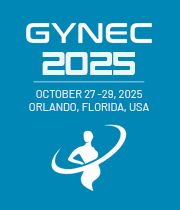Title : Bilateral corona mortis: Case report and implications in urogynecological surgeries
Abstract:
Introduction: Variations in the pelvic arterial systems are common in the population. Among these, the Corona Mortis (CM), or "crown of death" in Latin, occurs in 10 to 40% of individuals, with only 10 to 15% of cases being bilateral. CM is defined as the arterial or venous anastomosis between the obturator and inferior epigastric arteries. Patients with this anatomical variation are at increased risk of injury during gynecological surgeries.
Case Report: During a regular academic activity, we observed bilateral presence of corona mortis arteries and a corona mortis vein in a female cadaver. Both obturator arteries were absent, and pelvic irrigation was solely provided by the two CM arteries. On the left side, a pure corona mortis artery emerged as a branch of the external iliac artery, with a corresponding corona mortis vein located alongside the obturator vein. On the right side, a corona mortis artery emerged alongside the inferior epigastric artery from a common trunk of the right external iliac artery, with the venous system intact.
Discussion: Multiple authors stress that variations in pelvic vessels increase the risk of injury during trauma or iatrogenic injury in gynecological and urological surgeries. These injuries present high morbidity and mortality rates due to hemorrhagic shock. The anatomical knowledge of CM is critical for surgeons to prevent accidents when operating in the inguinal and retro-pubic regions. The corona mortis, located posterior to the inguinal canal and 3 to 7 cm above the pubic symphysis, is especially concerning in gynecological surgeries due to its proximity to major blood vessels, posing a risk of significant bleeding. Its difficult access further complicates hemorrhage control procedures. Gynecologists and urogynecologists should be well-versed in this variation, as it can affect surgeries such as hysterectomies, urinary slings, and prolapse corrections. Thus, preoperative knowledge is essential for vascular and hemorrhagic control, reducing the risk of patient mortality.



